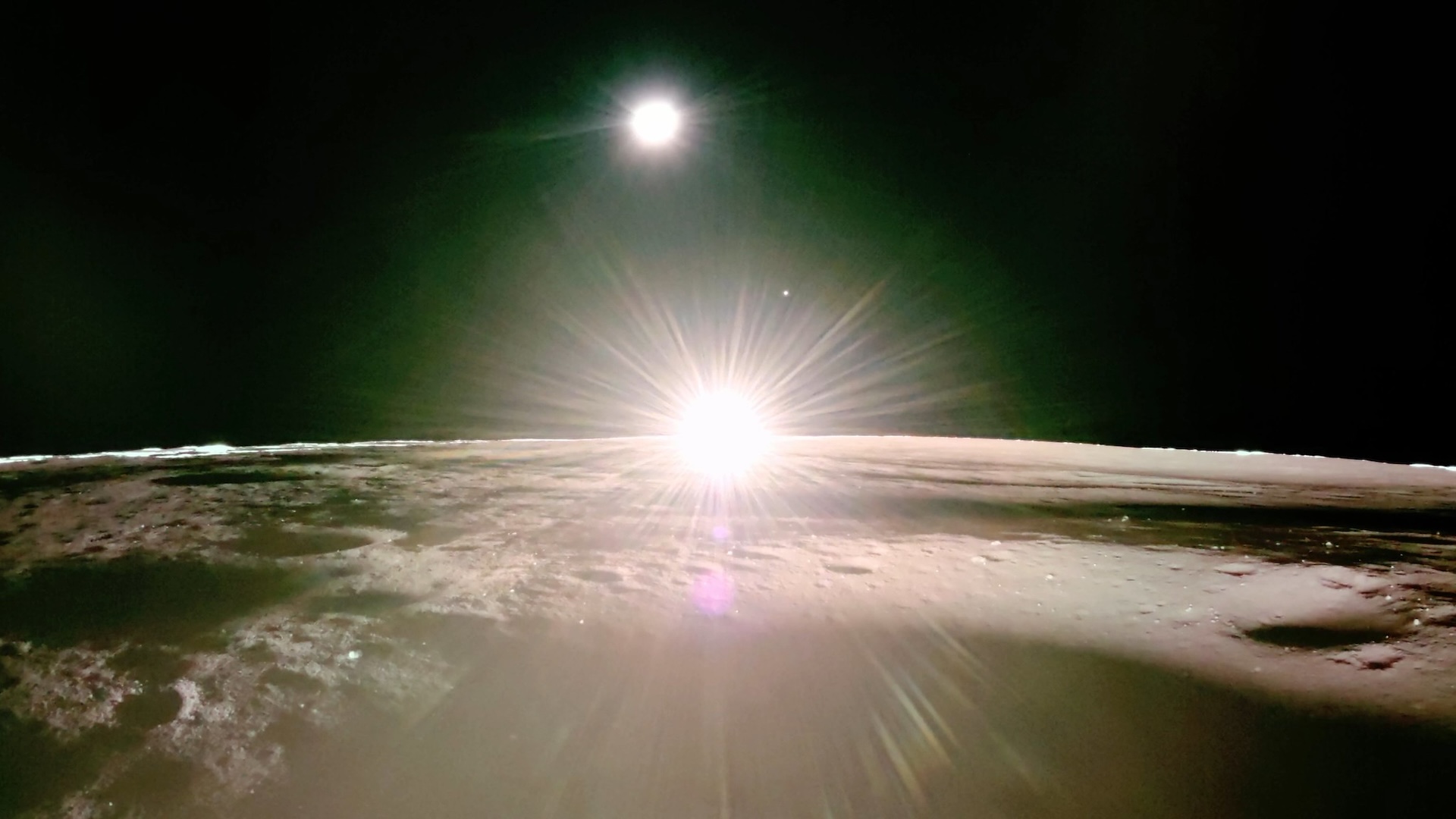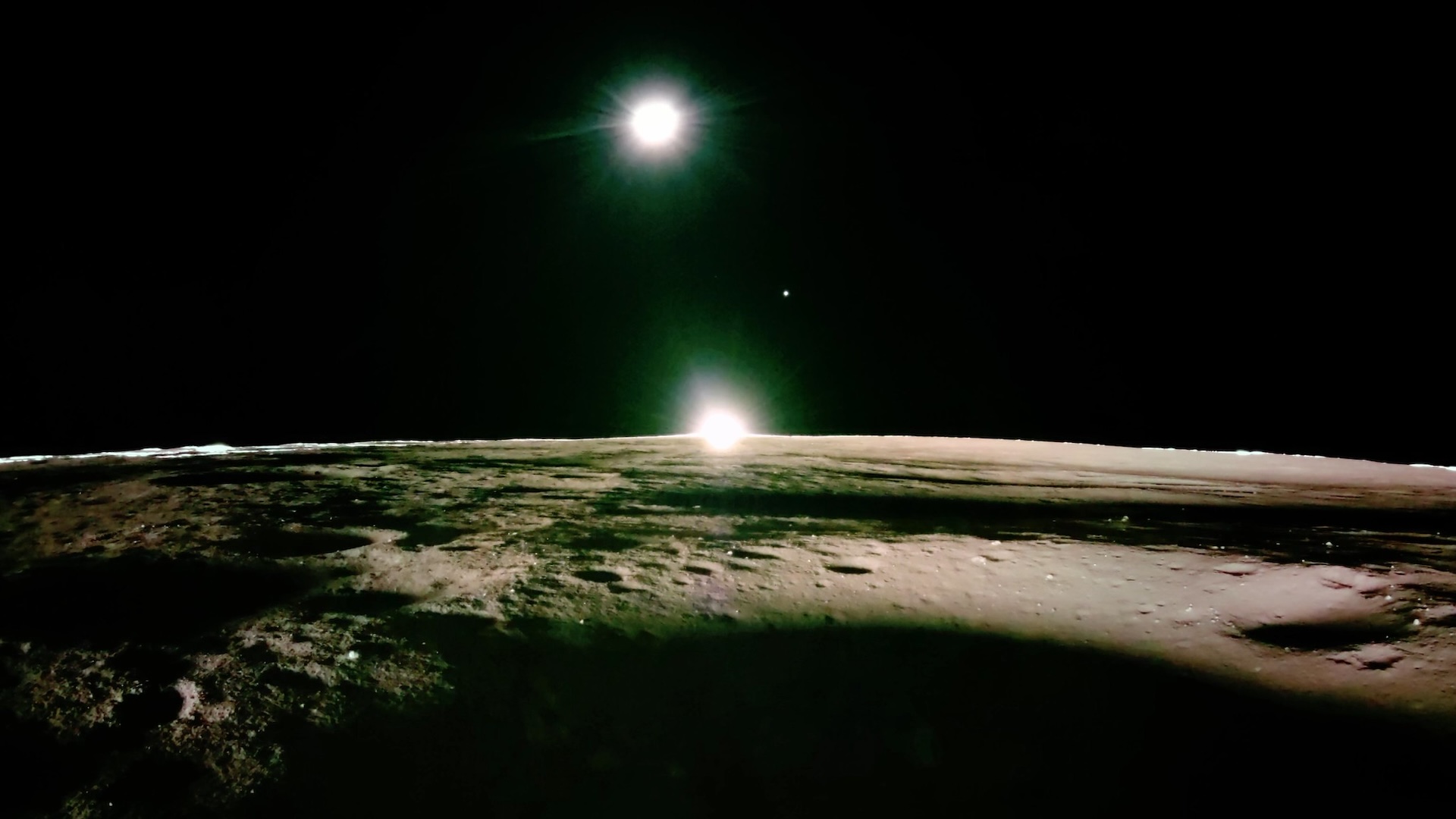
What it is: Sunset on the moon, part of the first collection of high-definition imagery of a lunar sunset
Where it is: Mons Latreille, a mountain in the moon's Mare Crisium ("Sea of Crises") basin
When it was shared: March 18, 2025
Why it's so special: This week, a spacecraft on the moon took a unique sequence of images of a lunar sunset. Firefly Aerospace's Blue Ghost lunar lander snapped these gorgeous high-definition photos from its position at the foot of Mons Latreille, a mountain in the "Sea of Crises" basin, close to the "Sea of Tranquility," where the Apollo 11 mission landed in 1969.
Taken from different cameras and stitched together, the footage shows the horizon glowing as the sun sets, with Earth and Venus on display. (Venus is the glowing dot to the upper right of the sun, and Earth is the large, bright object at the upper left.)

Sunsets are much rarer on the moon than they are on Earth. Because the moon is tidally locked with Earth, one day on the moon — sunrise to sunset — lasts 14.5 Earth days. That's half the time it takes for the moon to orbit Earth.
That explains why Firefly Aerospace's Blue Ghost mission, which launched Jan. 15, could sustain itself using solar panels for just over two weeks. After landing on March 2, it operated on solar power until transitioning to battery power on March 16. It finally "went dark" at 7:15 pm EDT that day, five hours after sending back its landmark images. In total, it operated during 346 hours of daylight on the moon, according to Firefly Aerospace.
As it went dark, Blue Ghost's mission came full circle, having begun with an image of a lunar sunrise on March 3. On March 14, the spacecraft took an iconic image of a "blood moon" total lunar eclipse as seen from Earth. From Blue Ghost's perspective on the moon, it saw a total solar eclipse — complete with a "diamond ring" effect — from a red lunar surface.
Blue Ghost Mission 1, nicknamed "Ghost Riders in the Sky," was a groundbreaking mission in lots of ways.
"Firefly's Blue Ghost Mission 1 marks the longest surface duration commercial mission on the moon to date, collecting extraordinary science data that will benefit humanity for decades to come," Nicky Fox, associate administrator of the Science Mission Directorate at NASA headquarters in Washington, D.C., said in a statement.
For more sublime space images, check out our Space Photo of the Week archives.







